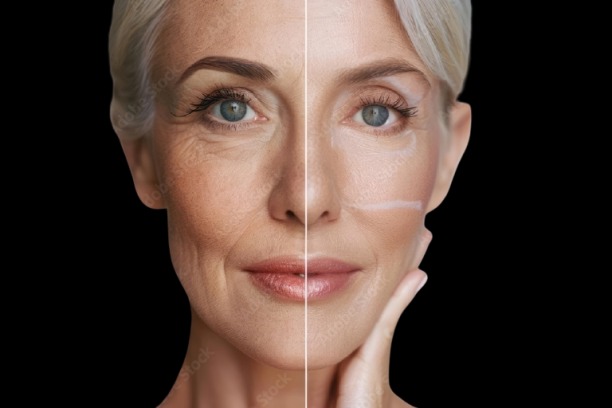


Discover the truth about anti-aging creams—debunk myths, explore benefits, and uncover the science behind youthful, radiant skin. #AntiAging
Aging is a natural process, but the desire to maintain youthful, radiant skin has led to the booming industry of anti-aging creams. With countless products claiming to reduce wrinkles, hydrate the skin, and restore elasticity, it’s essential to understand their role, effectiveness, and the science behind them. Are these creams the secret to timeless beauty, or are they just marketing gimmicks? Let’s jump into the world of anti-aging skincare.
As we age, our skin undergoes various changes due to both intrinsic (genetic) and extrinsic (environmental) factors. Collagen and elastin, proteins responsible for skin firmness and elasticity, start to break down. Additionally, hydration levels decrease, leading to dryness and fine lines. External factors like sun exposure, pollution, and lifestyle choices further accelerate these changes.
This is where anti-aging creams come in. They aim to counteract these effects by supplying essential nutrients, antioxidants, and hydrating agents to restore skin vitality.
1. Retinol (Vitamin A)
One of the most researched anti-aging ingredients, retinol boosts cell turnover, reduces fine lines, and improves skin texture. It stimulates collagen production and enhances skin elasticity, making it a staple in most anti-aging formulations.
2. Hyaluronic Acid
Hyaluronic acid is a powerful humectant that retains moisture, keeping the skin plump and hydrated. Since dehydration is a key factor in skin aging, this ingredient helps maintain a youthful glow.
3. Peptides
Peptides are brief chains of amino acids that act as building pieces for proteins like collagen and elastin. When applied topically, they help reduce wrinkles and improve skin resilience.
4. Vitamin C
A potent antioxidant, Vitamin C brightens the skin, evens out skin tone, and fights free radicals caused by UV exposure. It also aids in collagen synthesis, promoting a firmer appearance.
5. Niacinamide (Vitamin B3)
Known for its anti-inflammatory and brightening properties, niacinamide helps reduce redness, minimize pores, and strengthen the skin barrier.
6. Alpha Hydroxy Acids (AHAs) and Beta Hydroxy Acids (BHAs)
AHAs like glycolic acid and BHAs like salicylic acid exfoliate the skin, removing dead cells and promoting cell regeneration. This leads to smoother, more youthful skin over time.
Anti-aging creams work by delivering active ingredients deep into the skin, addressing specific aging concerns. Regular use can:
While anti-aging creams can significantly improve skin health, they are not miracle cures. Scientific studies support the effectiveness of ingredients like retinol and hyaluronic acid in reducing wrinkles and enhancing skin texture. However, results vary depending on skin type, age, and consistency of use.
According to dermatologists, the key to visible improvements is selecting products with clinically proven ingredients and using them consistently. Additionally, combining anti-aging creams with sunscreen enhances their effectiveness, as UV exposure is a major contributor to premature aging.
1. Anti-Aging Creams Provide Instant Results
While some creams offer temporary plumping effects, long-term benefits take weeks or even months to become noticeable. Patience and consistency are crucial.
2. Expensive Products Are More Effective
Price does not always indicate quality. Many budget-friendly products contain the same active ingredients as high-end brands.
3. Only Older People Need Anti-Aging Creams
Prevention is key! Dermatologists suggest beginning with anti-aging items in your mid-20s to keep up skin well-being and delay obvious signs of aging.
4. All Anti-Aging Creams Work the Same
Different formulations cater to various skin concerns. Understanding your skin type and selecting the right ingredients is essential for optimal results.
